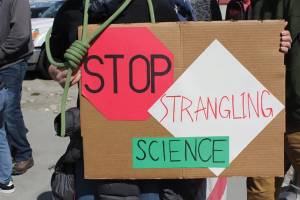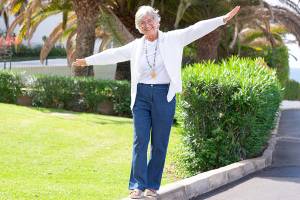contains affiliate links
By Suzanne Waring
The next time you decide to get a vaccination at your local health department, take a moment to remember people like Dr. Mary Atwater who insisted that a health department in Montana be established.
Mary, or Mollie as she was known in Montana, grew up in Vermont and taught school in Osage, Iowa, where she met Dr. Frank Moore. When they married, she was required to give up teaching. Surprisingly, it was a positive change because she became Frank’s assistant and began learning about his patients’ health. When she decided that she wanted to become a doctor, she and Frank moved to where she was accepted at Woman’s Hospital Medical College of Chicago. Receiving an outstanding education, she graduated in 1887.
The couple returned to Osage, Iowa, and opened a practice. Mary felt more confident and began to assert herself. She thought she should have a new role in their marriage, and Frank wanted things to remain the same. He began to resent Mary, who tried to be his equal as a doctor. He was adamant that Mary’s patients pay him directly requiring Mary to ask him for money anytime she wanted to make a purchase. To make the situation worse, they were living with Frank’s mother who didn’t care for Mary and especially hated Mary’s dog.
Not having any money, Mary borrowed $300 from a friend and disappeared in 1890 on a train going west to Salt Lake City where she had a friend. Salt Lake City turned out to be a frontier town where it was difficult for a woman doctor to find work. She worked as a nurse, but that wasn’t satisfying. When she was introduced to J. Henry Longmaid who was the superintendent of various mines in Montana, she accepted his offer to be the doctor for the families at the Golden Leaf Mine in Bannack, Montana. He mainly hired her because his young wife was pregnant and having difficulties.
Mary became the only doctor in the Bannack area. She was paid $75 a month by the mining company to care for the miners’ families. Everyone else paid her directly. She soon recognized the difficulties of women. They were worn out from having babies one after another or they attempted to use crude methods to have abortions which often took their lives. Mary took it upon herself to teach her patients about birth control measures that women in that day could use.
She quickly became accepted by the men after she saved the life of a man who was bleeding to death from a knife wound by operating on him on a billiards table in a saloon.
Within a year the mine at Bannack was no longer as active as it had been. In 1892 the Longmaids and Mary moved to the St. Louis and Drumlummon Mines near Marysville, Montana.
During the transition, Mary went home to sign divorce papers and to get her dog. After an awkward week with her family who didn’t approve of the divorce, Mary returned to Montana and started a new life by caring for the families at the mines. At that time, the nearby town of Marysville had a population of 2,000, and a train came and went daily to Helena, the state capital.
Mary started working for women’s right to vote along with Ella Knowles Haskell, Maria Dean, and Jeannette Rankin. Her interest lay beyond the scope of mere equal voting; she campaigned for entire equality in everyday living. It took years, but they finally attained the right to vote in 1914.
Soon after Mary arrived in Marysville, she met Ben Atwater who was an accountant. They often went as a couple to people’s homes for entertainment. When he asked her to marry him, she was taken back because she had never told anyone, including Ben, that she was divorced. Even though being a divorcée would be degrading to her reputation if it were known, Mary needed to confess. Atwater paused and then smiled. They were married in 1894 and had a daughter, Dorothy, in 1901.
In a few short years, the mines started closing, and Marysville was becoming a ghost town. In 1897 Mary and Ben moved to Helena where she practiced medicine. The convenience of residing in Helena enabled her to follow the lead of her good friend, Dr. Maria Dean, in lobbying the legislature to establish the Montana Department of Health.
Mary had also become aware of the spread of tuberculosis, especially among miners. She became the backbone for establishing the tuberculosis care center at Galen, Montana. Through articles and speeches, she taught Montanans how to prevent tuberculosis. Repeatedly, she stressed cleanliness. She also encouraged the legislature to pass a law requiring spittoons to be available and making it unlawful to spit just anywhere.
The Spanish Flu of 1917 hit Montana with a vengeance. Mary was asked to go to Whitefish, Montana, to help with the outbreak there. She and several volunteers took over the Masonic Hall and treated over a hundred patients in the weeks that the town was in crisis. Because of Mary’s strict rules for cleanliness, no one died, and the volunteers did not get the flu. Mary insisted on burning handkerchiefs and other materials that came in contact with the patients, on wearing masks and changing them every few hours, and on constant hand washing. These are common preventive measures now, but germ therapy was relatively new in the United States then.
After Ben died of a heart attack in 1931, Mary moved to California to be near her daughter and passed away in 1941 at the age of eighty-two.
The Montana Department of Health and Human Services, benefiting generations after its inception, has become the largest executive agency in Montana government. As a result of good sanitation, we no longer worry about tuberculosis; Montana had only six cases in 2023. Now a little over a hundred years since women won the right to vote, women increasingly run for and are elected to governmental offices. In this year’s legislature, women represent 34 percent (total of 51) of the legislature, which is the highest percentage in history. Mary championed these controversial issues at the turn of the twentieth century; and because of her, and others like her, efforts have made life better for Montanans. MSN
A biography of Dr. Mary Atwater is titled Pioneer Doctor: The Story of a Woman’s Work and written by Mari Graña, Mary’s granddaughter.









